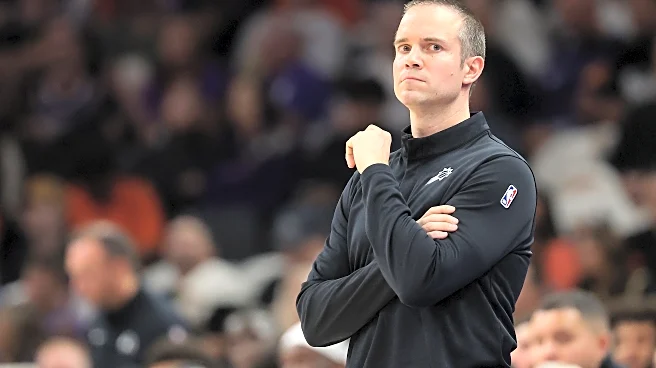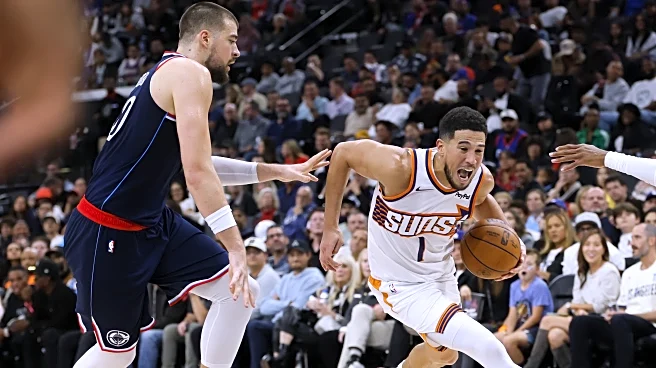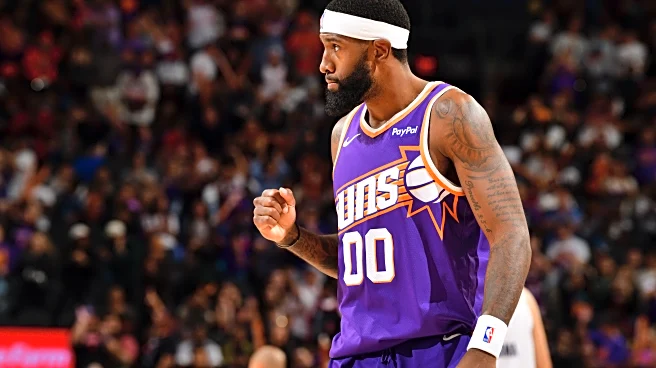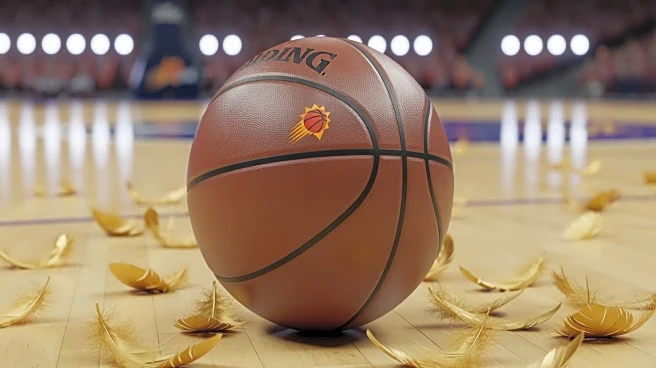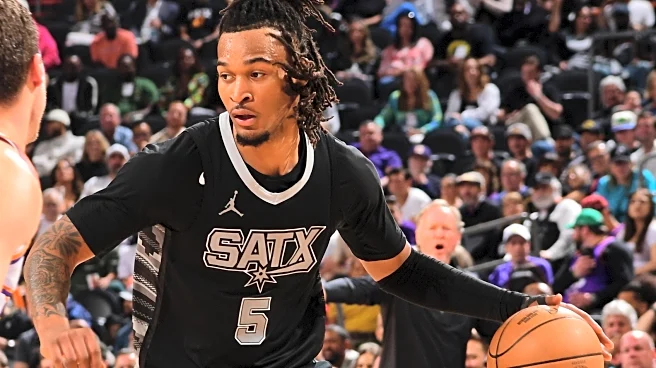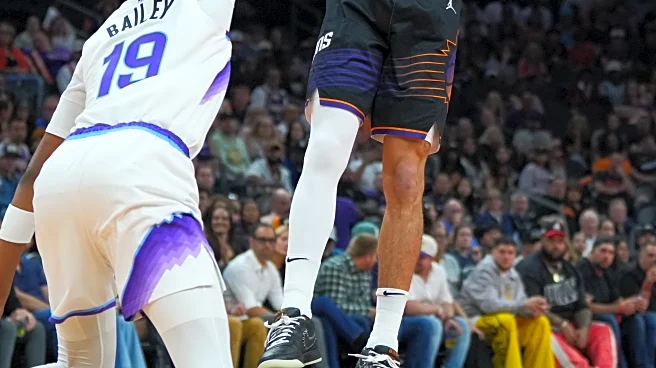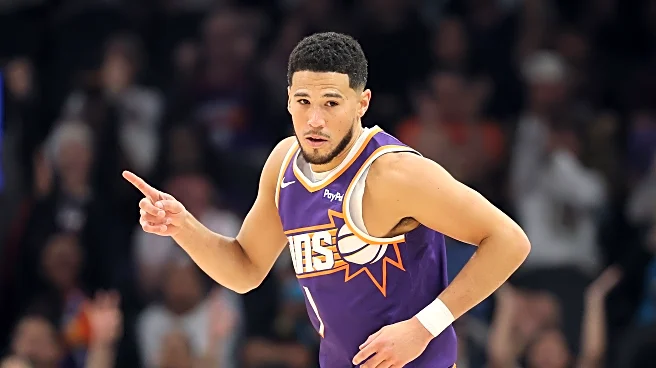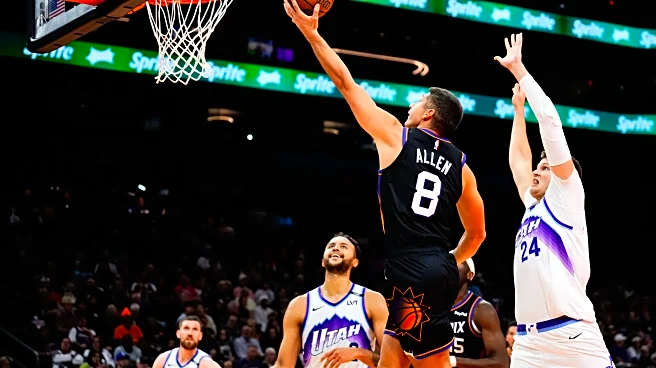Six games in, and one question already arises: what does the Suns’ offense under Jordan Ott actually look like? Between a desire for movement, spacing, and ball-sharing, the philosophy announced in preseason still seems to be finding its balance. The intentions are there, but their translation on the floor remains inconsistent — sometimes brilliant, often uneven.
Tempo as the main weapon?
Jordan Ott was clear from his introductory press conference: “We’re going to play faster. […] Playing earlier in the clock.” The heart of
his offense is tempo.
Phoenix doesn’t aim to wear down opposing defenses in the half-court, but to outrun them. The staff is betting on a simple mathematical principle: the earlier a possession is played, the more efficient it is — taking advantage of defensive disorganization before it sets.
This approach demands conditioning, quick reads, and a clear hierarchy of responsibilities. The goal isn’t recklessness, but clarity at high speed — to provoke imbalance and turn defensive stops or rebounds into easy buckets.
The words are there, but do they show up in the numbers? Of course, the Suns sit near the bottom of the standings for now, but is there alignment between the theory and the stats — or a clear dissonance between the two?
The Suns under Jordan Ott want to accelerate the pace — and the numbers confirm it. Fourth in total shot attempts (85 per game) and in three-point attempts (39.2), they play at one of the fastest rhythms in the league, ranking 10th in pace. The idea is clear: create danger in the first seconds of the possession (via NBA.com).
Around 35% of their shots come between 22 and 16 seconds left on the clock — top 8 in the NBA. This offense aims to be instinctive, fluid, almost instantaneous: 53% of shots come without a single dribble — a league-high — and nearly two-thirds are taken within two seconds of catching the ball, the second-highest mark in the league. Phoenix isn’t looking to “manufacture” the perfect shot, but to strike before the defense has time to breathe (via NBA.com).
A living, fluid, collective offense
Phoenix’s offensive system relies on two main finishing actions: spot-ups — which account for 31% of their possessions (at 1.11 points per possession) — and cuts (7th-most frequent in the NBA), plus two secondary ones: pick-and-rolls and off-screen actions (around 25% frequency).
In total, nearly 60% of Phoenix’s offense runs through these four actions — numbers that perfectly align with Jordan Ott’s desire to simplify the game and keep it in motion.
To illustrate this philosophy, here are four sequences from the start of the season that best represent the offensive identity Phoenix is building.
We start with a Second-side Action for Royce O’Neal — simple, efficient: all five players are involved to free our forward in the corner.
Then, a beautiful passing sequence to move and stretch the defense, ending with a cut from Oso Ighodaro:
Next, a screen-the-screener action — once again for Royce O’Neal — built from a cross-screen and off-ball movement involving Ryan Dunn and Dillon Brooks:
Finally, a clip showcasing Nigel Hayes-Davis in an offensive hub role — positioning himself at the heart of the defense to create a 3v2 situation:
Between bright ideas and wasted opportunities
The Suns’ offense is ambitious, fast, and fluid — but far from perfect. The stats speak for themselves. Phoenix ranks fifth in offensive rebounds per game, yet their second-chance efficiency is poor: just 0.94 points per possession on putbacks, placing them 25th in the NBA. In other words, the team creates plenty of extra possessions — but wastes too many of them.
Transition offense, another supposed strength of this fast-paced system, has also underperformed. At just 46.8% efficiency, it falls well short of the potential expected from a team built to attack early and punish defensive imbalance.
Then comes the paradox of ball movement. The Suns average 23.7 assists per game (8th), but 54.8 potential assists (2nd), meaning many good looks go unrewarded due to poor shooting efficiency. The movement is there, but the finishing isn’t — the ball travels beautifully, the scoreboard less so (via NBA.com).
These numbers reveal the gap between offensive intention and on-court execution. The aggression and rhythm are real, the philosophy is clear, but for the offense to become truly dangerous and sustainable, Phoenix will need to reduce turnovers, capitalize on second chances, and finish plays more efficiently.
The Suns’ offense is moving fast. Sometimes faster than its own execution can handle. Jordan Ott has installed a clear philosophy: rhythm, movement, simplicity. The structure is there, the principles are visible, but consistency is still missing. The “Ott’s Ball” era is in its early foundations: a modern, ambitious idea that must now learn to turn controlled chaos into sustained efficiency.
